Tesla: Critical Evaluation of Corporate Social Responsibility and Global Innovation Management
Published in 2016

Introduction
Established in 2003, Tesla Motors, the US-headquartered manufacturer of electric vehicles, solar panels and solar roof tiles, has become globally famous for its pioneering, innovative and entrepreneurial efforts in the development of electric vehicles and renewable energy. The firm has grown phenomenally in the last two decades and is now one of the most valuable corporations in the world. Its CEO Elon Musk is currently one of the the wealthiest persons in the world.
Tesla became the first company to sell 1 million units globally in June 2021 (Sanjib, 2022). Whilst Tesla is certainly considered to be a modern-day phenomenon on account of its immense technical, innovative and entrepreneurial ability, it has also been embroiled in several controversies on account of dangerous technical problems with its products and criticism for engaging in creative accounting, retaliating against whistle-blowers and violating workers’ rights (Dudovskly, 2021). The organisation is an enigma and an object of great curiosity and interest.
Business organisations in the past were expected to accrue and enhance organisational and shareholder wealth, work within the boundaries of the law and pay their due taxes (Crane et al., 2013). With little else being expected of them, business corporations intentionally and unintentionally engaged in a variety of undesirable actions, including environmental degradation, worker oppression, supplier mistreatment, customer short-changing and dodgy accounting practices (Frynas, 2006). Such corporate attitudes and behaviours have changed radically over the course of the last four decades, and modern organisations are expected to behave with high levels of corporate social responsibility (Youmatter, 2020). They are expected to ensure optimal corporate governance, address various stakeholder needs, benefit the community and safeguard the environment. It is not enough for companies to only develop amazing products and achieve enormous financial success; they also have to behave like very good corporate citizens (Frynas, 2006).
The capacity for organisational innovation is considered to be the most critical driver of competitive advantage and business growth in the intensely challenging and competitive contemporary business and economic environment (White & Bruton, 2007). With new technological developments occurring with immense frequency and product lifecycles becoming increasingly shorter, corporations with high levels of innovative capabilities, like, for example, Amazon and Google, are growing much faster than their contemporaries (Tidd & Bessant, 2014). Tesla is also recognised as a highly innovative organisation, and its innovations go well beyond electric cars and include various solar energy products (Hawkins, 2017). Investors are backing Tesla with great enthusiasm, primarily because of its immense innovative ability.
Corporate Social Responsibility
Corporate Social Responsibility (CSR) is the internationally regarded concept of responsible corporate behaviour. Whilst CSR lacks a clear definition, it pertains to a corporation’s ethical and moral obligations, with particular regard to its employees, customers, suppliers, environment and competitors, as well as the larger economy and the other areas of life that are affected by a business (Aldama et al., 2009). Whilst responsible behaviour by organisations is not a new development, and the honest merchant has always been respected, corporate responsibility has taken on a new meaning since the 1970s with a strong focus on issues like environmental safety, ethical and moral dealing, organisational equality and equity, customer care and satisfaction, supplier nurturing and very high levels of regulatory compliance (Youmatter, 2020). The area of CSR has benefited greatly from contributions from experts like Robert Freeman and Carroll and Buchholtz (2003).
Robert Freeman (1984) advanced the theory of stakeholder management, wherein he argued that modern organisations need to extend their priorities beyond their focus on organisational shareholders and address the needs of various other stakeholders who contribute substantially to organisational growth and success. These include customers, suppliers, employees, the community, the government and the larger environment (Gill, 2008). Freeman (1984) argued that whilst shareholders certainly contributed to organisational establishment and success by investing their funds and assuming financial risks, the other stakeholders also contributed strongly to organisational growth, and it was fair to ensure that their needs were also addressed.
Carroll and Buchholtz (2003) advanced their four-part definitional framework for CSR in 1979 and followed it in 1991, wherein they stated that CSR entailed four specific responsibilities, namely (1) economic responsibilities, (2) legal responsibilities, (3) ethical responsibilities and (4) philanthropic responsibilities. They developed a CSR pyramid that is provided below.
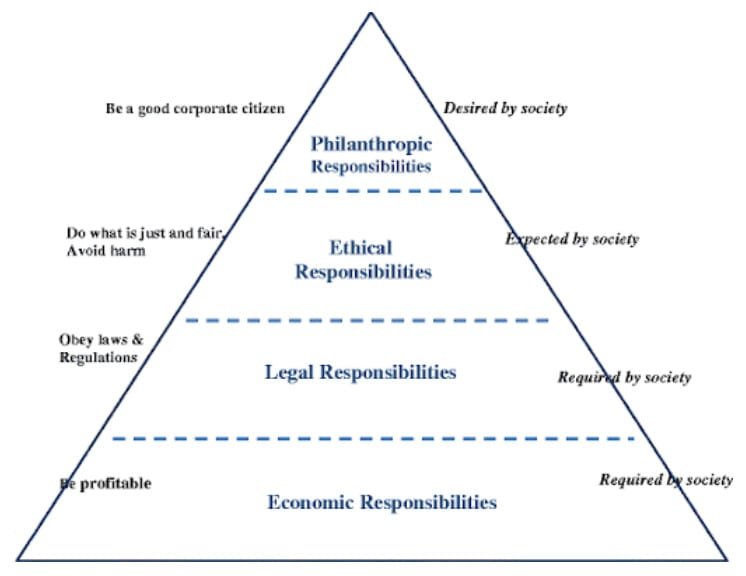
CHART 1: CSR PYRAMID (Source: Carroll & Buchholtz, 2003, p16)
Stefanie Hiss (2019) developed the responsibility model, wherein she separated CSR into three core areas, namely internal, middle and external. The responsibility model is described in the following diagram.
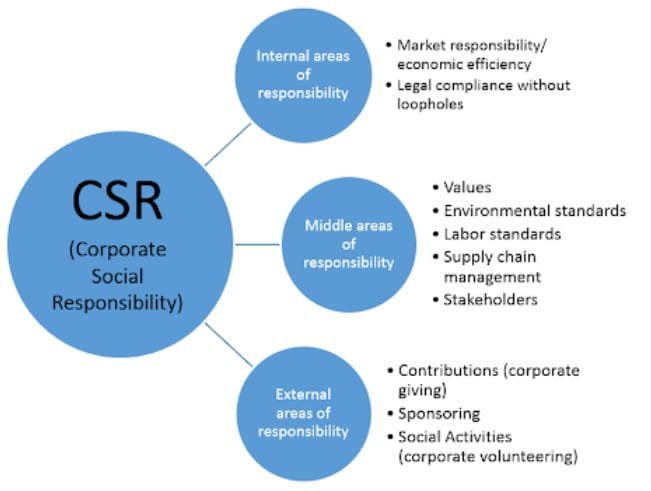
CHART 2: THE RESPONSIBILITY MODEL (Hiss, 2019, p1)
Hiss (2019) makes the point that contemporary organisations must ensure ethicality in the development and implementation of corporate strategy, an area that is usually the responsibility of organisational executives. They must focus on the effect of organisational operations on the environment and stakeholders, who include employees, clients, providers of equity and debt capital, governmental agencies, local residents and the media (Hiss, 2019). They must finally pay due attention to external areas of responsibility, which primarily deal with philanthropy and include contributions, sponsoring and social activities (Spitzeck, 2009). It is advisable to evaluate and analyse Tesla’s CSR strategies and their implementation with particular regard to the frameworks detailed above.
There is considerable material available on Tesla’s CSR practices in the public domain, which can be accessed for the purpose of this analysis. It is undoubtedly necessary to acknowledge that a vital prospect of CSR, namely environmental protection, is hardcoded into the organisation’s DNA. The organisation’s mission is to “to accelerate the world’s transition to sustainable energy” (Tesla Inc, 2020a). The firm primarily aims to reduce greenhouse gas emissions by substituting petrol and diesel-driven vehicles with non-emitting electric cars and driving a switchover to renewable energy from fossil-powered electricity (Tesla Inc, 2020b). An examination of its IMPACT report reveals the following strategies for CSR fulfilment.
- Environmental Policies: The organisation’s focus on substituting fossil fuel-driven vehicles with electric vehicles ensures that greenhouse gas emissions reduce during the entire lifecycle of each electric vehicle sold by the company. The firm is working towards becoming carbon negative by incorporating several groundbreaking energy-saving features at its production sites. Many of its raw materials are sourced from lesser developed countries, and the organisation has dedicated resources to ensure that its manufacturing processes are environmentally responsible. The firm has made considerable progress in reducing its usage of water and expects that air quality will improve with the progressive substitution of ICE vehicles with electric automobiles (Tesla Inc, 2020b; Barhat, 2019; Yoon, 2019).
- Stakeholder Responsibilities: The firm prioritises the training and safety of its staff and its report on corporate governance reveals that the organisation is committed to its employees and ensures that they are well paid and invited to the organisational decision-making process (Tesla Inc, 2020b: Yoon, 2019).
Notwithstanding these positive aspects of Tesla’s CSR strategy and effort, the organisation has been subjected to considerable criticism on account of its workplace culture, worker safety issues and Elon Musk’s intemperate outbursts (Paul, 2022). Whilst Tesla has repeatedly emphasised on its commitment to its employees, black workers have frequently alleged the occurrence of racism in the firm through harassment, supervisor bullying and racist graffiti (Clark, 2022). Lawsuits have been filed against the company for racial discrimination. Tesla has, however, denied such allegations vehemently and accused plaintiffs of falsity and the need to generate publicity (Paul, 2022). Internal reports state that 10% of its workforce are Blacks and 22% Hispanics, but their representation at the director level is very low (Paul, 2022). Several female employees have also alleged discrimination by way of harassment, physical assaults and catcalling (Clark, 2022).
Analysing and assessing Tesla’s CSR efforts against the frameworks described earlier, it can be inferred that the organisation is undoubtedly contributing towards environmental sustainability, supply chain management, customer satisfaction and supplier nourishment, especially in the lesser developed nations. There, however, seems to be a massive deficit in the area of organisational equality and equity, with both Black and female employees complaining of harassment and discrimination (Paul, 2022). It is also a matter of some concern that the organisation is not mainly known for philanthropic donations, social improvement or community development (Clark, 2022). It can thus be concluded that whilst the organisation’s work is undoubtedly helping environmental sustainability and reduction of greenhouse gas emissions, it needs to do much more in areas of employee equality and empowerment, as well as community welfare.
Global Innovation Management
Global innovation management combines two important concepts of business, namely innovation and management on a global scale. Innovation includes several branches like technological innovation, organisational innovation, business model innovation and market innovation, amongst others (Westland, 2008). Management conversely involves the coordination of various tasks and activities within organisations. Innovation management is thus a structured activity that combines innovation with management to create high levels of organisational value (White & Bruton, 2007). Global innovation management, which commenced some years ago, entails the active participation of organisational employees from different global locations for the pooling of ideas, working together and generating effective and appropriate solutions for complex business challenges (Scott et al., 2008).
A building of a culture of innovation by an organisation across its global offices leads to the driving of effective and sustainable practices that generate more ideas (Dougherty, 2016). Such activities result in considerable organisational benefits with regard to achievement and furtherance of competitive advantage. The global pooling of innovation helps in the production of new products and services, the improvement of development processes and the implementation of cost-reduction techniques (Bessant & Tidd, 2011). Contemporary organisations enhance global innovation capabilities through the implementation of the following management practices.
- Creation of Conversations: This entails the involvement of all employees in innovation actions in order to develop a culture of innovation. Many organisations make use of crowd sourcing for this purpose (Dubickis & Gaile-Sarkane, 2015).
- Pooling in Employees: This involves the involvement of employees in ideation and nurturing the internal side of open innovation for the amplification of participation (Afuah, 2009).
- Use of Awareness Campaigns: The creation of innovative ideas calls for strategic orientation. This helps in the generation of new and the strengthening of an innovation culture. The running of awareness campaigns helps encourage all organisational members to participate in innovation projects (Bessant & Tidd, 2011).
- Introduction of a Common Space: Many employees rarely get a separate time and space to get innovative ideas. The introduction of a common space within an organisation helps in the coordination of the discussion of various innovative ideas and strategies.
- Transparency: The inculcation of transparency in an organisation helps in boosting an innovation culture. Transparency leads to greater awareness amongst employees of ideas, challenges and strategies discussed within an organisation. This helps them prioritising required tasks and recommending ideas for the same (Westland, 2008).
Several companies have made use of global innovation management in order to bring teams together and innovate new ideas or strategies. Some global examples include Apple, Singapore Airlines and DuPont (Furr & Dyer, 2020). Tesla is engaged in the manufacture of electric automobiles, solar panels and electric batteries for commercial or domestic use. The organisation focuses on encompassing the latest and innovative technology in order to generate premium value (Furr & Dyer, 2020). All products are characterised by new and innovative designs that add the value and are extremely useful in marketing. The firm maintains an open innovation management structure that enables, encourages and facilitates every employee to participate in the innovation and production practices (Naik, 2021). Tesla has an open communication policy that drives the swift and efficient transmission of messages and plans across the organisation (Dyer & Gregersen, 2016). The organisational structure has purposely been kept flat for the facilitation of decision-making, communication and participation.
The reading of the literature available in the public domain on this issue reveals that managers and juniors function as partners in organisational decision-making processes. The organisational culture stresses upon the elimination of barriers between employee levels and departments in order to drive communication and facilitate innovation across the organisation’s departments and geographic locations (Meyer, 2019). LibertyMind (2021) informed that Tesla’s corporate culture constantly encourages all members of its workforce to relentlessly develop new ideas and various solutions that meet the global markets. Some of the strategies developed by Elon Musk for this purpose are elaborated below.
- Reduction of the Size of Meetings: The number of attendees at Tesla meetings is kept small and is limited to 4 to 6 people who can offer value at the meeting. The firm believes that employees should be engaged in productive work rather than in long meetings where they are not specifically needed (Meyer, 2019).
- Broad Spans of Control: Employees are not restricted by organisational silos and rules. They are encouraged to do their jobs in the ways they think fit as long as they generate positive results. Endorsing employee freedom helps in the development of innovative and creative abilities. Top leaders and managers frequently host training programmes for employee development (Naik, 2021).
- Responsibility and Trust: Employees are hired with great care after checking their records for substantial past achievements. Once employed, they are provided with responsibility and trusted to deal with the situation (Dyer & Gregersen, 2016).
- Focus on Youth: Most of Tesla’s leaders are young and smart; they are prompted to try out something that is out of their comfort zone. The organisation has a performance acceleration programme, which helps in the rapid adaptation of young employees and in the inculcation of innovative capabilities (Furr & Dyer, 2020).
- Thinking like Owners: Employees are encouraged to think like owners, support business development and take responsibility for the rise and fall of their projects (Naik, 2021).
The examination of Tesla’s innovation strategy definitely reveals that the firm adheres to the tenets of global innovation management. It focuses on increasing the participation of all employees at different levels across national borders and geographies. Whilst Tesla has been extensively criticised by external observers for various causes, there is immense respect for its comprehensive, innovative strategy (Furr & Dyer, 2020). There is broad agreement that it makes use of forward-thinking, creative problem solving, persuasion, young people and high levels of responsibility and accountability for driving innovation (Meyer, 2019).
Conclusion
The examination of Tesla’s CSR approach informed that the organisation’s very mission entailed the reduction of greenhouse gas emissions from vehicles and power plants. The organisation’s basic objective is thus the development of environmental sustainability, and this speaks very well of its CSR approach. Tesla has carried out and is working on ways and means to enhance its battery life, improve the effectiveness of its solar generation systems and reduce emissions from its factories, as well as from its supply chain. Apart from working in this area, the organisation chooses its employees with great care, remunerates them well, involves them in decision-making processes and provides them with excellent training. Its CSR strategies are thus adequate, even good, in areas of environmental safeguarding and optimisation of people.
The firm has, however, been accused of making use of creative accounting to boost organisational results and retaliating and reacting against whistle-blowers. Whilst these allegations have not been proven, they do cast some doubts on Tesla’s legal and ethical approaches. The firm’s business strategies have resulted in enormous growth in market capitalisation and shareholder wealth accretion; this implies that the organisation has been eminently successful in meeting its economic responsibilities. Tesla has, however, been severely criticised for allowing discrimination against blacks and females in the company, even though the organisation has denied such allegations vehemently. The firm is nevertheless facing litigation in this area. It can thus be concluded that notwithstanding the organisation’s enormous contribution towards the reduction of greenhouse gas emissions, it needs to focus on the protection of employees from discrimination on the basis of race and gender. The firm should also place more significant stress on community development and philanthropic contribution, considering its substantial economic wealth.
The investigation of Tesla’s approach towards global innovation management revealed that the firm had taken numerous steps to ensure the optimisation on the management of its innovation skills and abilities across the organisations, including the different geographies in which it works. The firm chooses its prospective employees with great care after assessing their previous movements. It provides continuous and high-quality training, making use of both internal and external talent. Tesla treats its employees as partners in organisational decision-making processes, asking and encouraging them to put forward suggestions and solutions and recognising their achievements in different ways. Elon Musk has taken specific initiatives to remove the restrictive impact of silos and departments to enhance internal organisational communication. Employees are encouraged to think out of the box, apply their own methods in carrying out their responsibilities and empower them with both responsibilities and trust. The adoption of these various methods confirms that Tesla has successfully implemented global innovation management techniques, which is doubly enhanced by its enormous success in innovation and the development of innovative products and processes in various organisational areas.
More From This Category
Innovation & Change are Central to Value Creation
The achievement and effective use of knowledge is widely accepted by contemporary managements, theoInnovation, as a concept, has been examined and developed over time, which, in turn, has resulted in the creation of several definitions. Innovation entails the conversion of an idea into a solution that results in addition to value from the perspectives of customers. Customers are unlikely to change their buying behaviour if an innovative product does not result in value addition for them. Innovation involves the application of useful and novel ideas; creativity comprises the seed of innovation but is likely to remain in the realm of idea generation until and unless it is applied and scaled suitably).
Organisational change constitutes the process of alteration of organisational strategies, processes, procedures, technologies, and culture.rists and researchers to be the chief source of competitive advantage of modern day business organisations.
Theories of Entrepreneurial Opportunity
The study of entrepreneurship isn’t just about admiring successful entrepreneurs from afar. It’s about digging deep into why they do what they do, when they do it, and how it all plays out in the end. It’s like peeling back the layers of an onion to uncover the juicy bits inside.
And to tackle these burning questions, we’ve got two heavyweights in the ring: the Discovery Theory and the Creation Theory. These bad boys are all about figuring out why humans do what they do and how it helps them achieve their goals.
Behavioural Theories and Entrepreneurship
Management and behavioural experts have delved into entrepreneurship extensively, and there’s a whole body of work on the topic. Lazear paints a broad picture, defining an entrepreneur as someone who starts a new venture. But that definition lumps together someone opening a small local business with giants like Jeff Bezos or Steve Jobs. Sure, there’s some truth there, but it’s tricky to draw general conclusions about entrepreneurship because it comes in so many shapes and sizes. Entrepreneurship research tackles big questions like why some people dive into entrepreneurial ventures while others with similar talents and energy don’t, and why some spot entrepreneurial opportunities while others miss them.
Competitive Advantage through the Learning Organisation
The achievement and effective use of knowledge is widely accepted by contemporary managements, theorists and researchers to be the chief source of competitive advantage of modern day business organisations.
Communities of Practice in Knowledge Transfer
The achievement and effective use of knowledge is widely accepted by contemporary managements, theorists and researchers to be the chief source of competitive advantage of modern day business organisations.
A Unique Entrepreneurial Path: Sir Richard Branson
This short report aims to analyse the area of entrepreneurship, with specific reference to the entrepreneurial abilities, skills, and success of Sir Richard Branson.


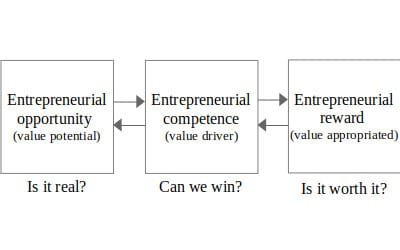
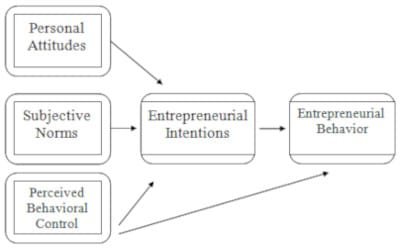
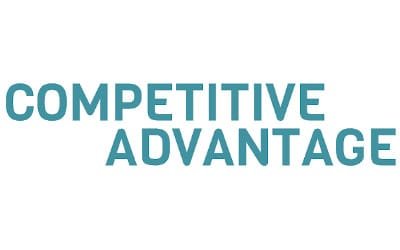
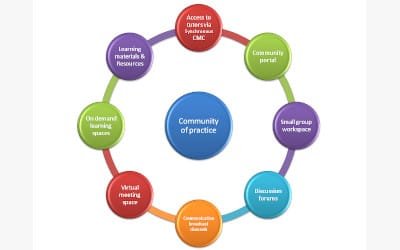
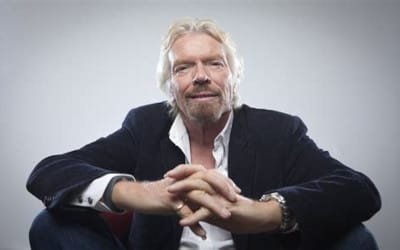
0 Comments